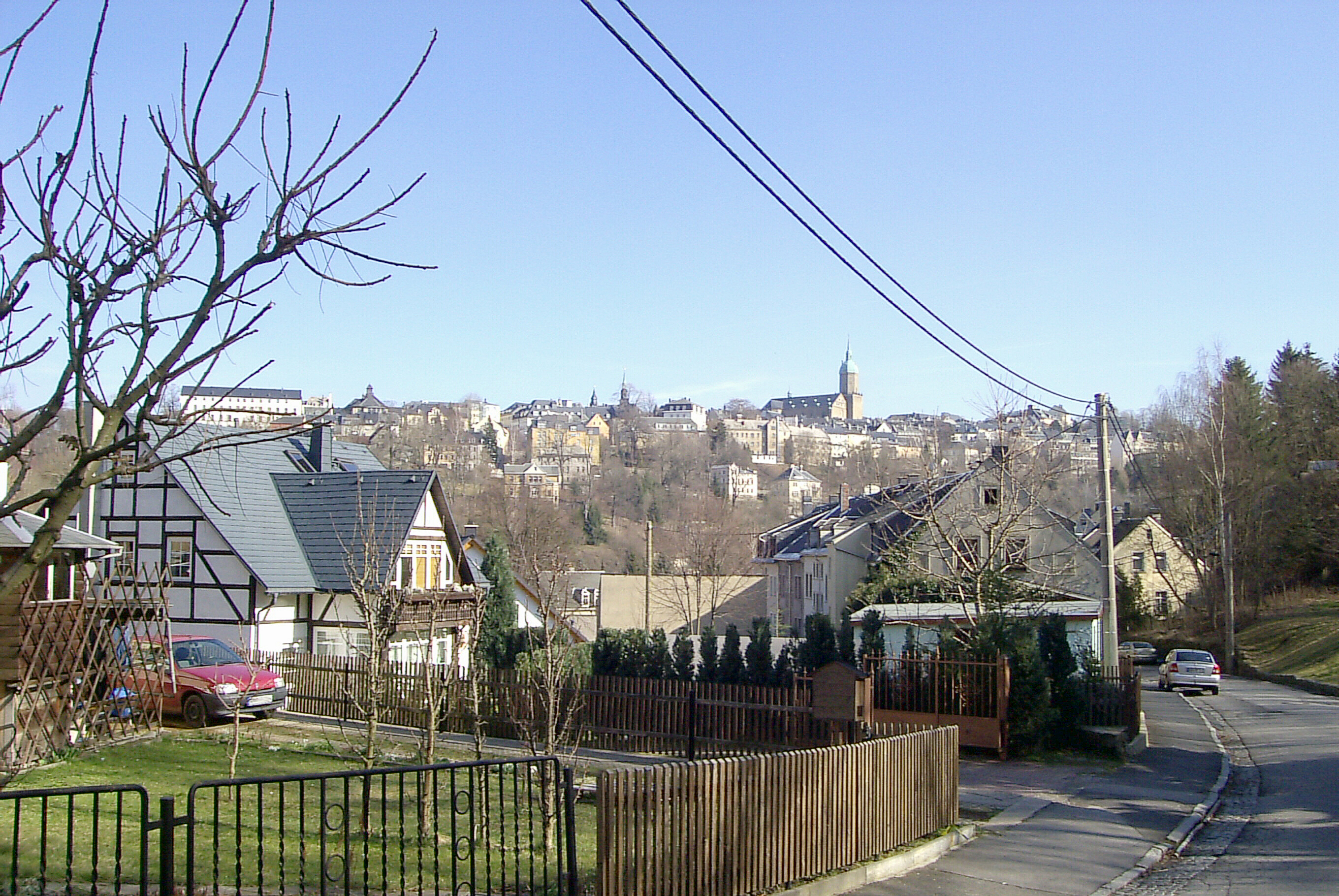|
Siegfried Lorenz (politician)
Siegfried Lorenz (born 26 November 1930) is a former senior party functionary of the ruling Socialist Unity Party of Germany (SED / ''Sozialistische Einheitspartei Deutschlands'') in East Germany. He was a member of the Politbüro of The Party's Central Committee in Berlin and First Secretary of the party's Karl-Marx-Stadt regional leadership team. During his career held a number of positions with the country's FDJ (Free German Youth movement). On 6 August 2004, fifteen years after the Wall came down, Lorenz, then aged 73, was one of two senior party officials found guilty by the Berlin regional court as accessories to murder. The case involved Michael Bittner, Lutz Schmidt and Chris Gueffroy, three citizens of the former German Democratic Republic who had been shot dead while trying to escape to West Berlin. Life Early years The son of a dyer and a seamstress, after leaving school Lorenz worked as an agricultural assistant and an errand boy between 1944 and 1945. Politics a ... [...More Info...] [...Related Items...] OR: [Wikipedia] [Google] [Baidu] |
Annaberg-Buchholz
Annaberg-Buchholz () is a town in Saxony, Germany. Lying in the Ore Mountains, it is the capital of the district of Erzgebirgskreis. Geography The town is located in the Ore Mountains, at the side of the ''Pöhlberg'' ( above sea level). History The previously heavily forested upper Ore Mountains were settled in the 12th and 13th centuries by Franconian farmers. Frohnau, Geyersdorf, and Kleinrückerswalde—all now part of present-day town—are all attested from 1397. Barbara Uthmann introduced braid- and lace-making in 1561 and it was further developed in the 1590s by Belgian refugees fleeing the policies of Fernando Álvarez de Toledo, 3rd Duke of Alba, Spain's governor over the Low Countries. The industry was further developed in the 19th century, when Annaberg and Buchholz were connected by rail to Chemnitz and each other and both settlements had specialized schools for lace-making. The population of Annaberg in the 1870s was 11,693. This had risen to 16,811 by 1905, ... [...More Info...] [...Related Items...] OR: [Wikipedia] [Google] [Baidu] |
Soviet Military Administration In Germany
The Soviet Military Administration in Germany (russian: Советская военная администрация в Германии, СВАГ; ''Sovyetskaya Voyennaya Administratsiya v Germanii'', SVAG; german: Sowjetische Militäradministration in Deutschland, SMAD) was the Soviet military government, headquartered in Berlin-Karlshorst, that directly ruled the Soviet occupation zone of Germany from the German surrender in May 1945 until after the establishment of the German Democratic Republic (GDR) in October 1949. According to the Potsdam Agreement in 1945, the SMAD was assigned the eastern portion of present-day Germany, consisting mostly of central Prussia. Prussia was dissolved by the Allies in 1947 and this area was divided between several German states ''(Länder)''. German lands east of the Oder-Neisse line were annexed by Soviet Union or granted to Poland, and Germans living in these areas were forcibly expelled, having had their property expropriated and been rob ... [...More Info...] [...Related Items...] OR: [Wikipedia] [Google] [Baidu] |
Patriotic Order Of Merit
The Patriotic Order of Merit (German: ''Vaterländischer Verdienstorden'', or VVO) was a national award granted annually in the German Democratic Republic (GDR). It was founded in 1954 and was awarded to individuals and institutions for outstanding contributions to the state and society in various areas of life. Classes * Honor clasp, in Gold * Gold, 1st class * Silver, 2nd class * Bronze, 3rd class The award The official language for the award stipulated it was given "for outstanding merit": * "in the struggle of the German and international labor movement and in the fight against fascism," * "in the establishment, consolidation and fortification of the German Democratic Republic," * "in the fight to secure peace and advance the international influence of the German Democratic Republic".Auszeichnungen in der DDR Die D ... [...More Info...] [...Related Items...] OR: [Wikipedia] [Google] [Baidu] |
Karl-Marx-Stadt
Chemnitz (; from 1953 to 1990: Karl-Marx-Stadt , ) is the third-largest city in the Germany, German States of Germany, state of Saxony after Leipzig and Dresden. It is the List of cities in Germany by population, 28th largest city of Germany as well as the fourth largest city in the area of former East Germany after (East Berlin, East) Berlin, Leipzig and Dresden. The city is part of the Central German Metropolitan Region, and lies in the middle of a string of cities sitting in the densely populated northern Ore Mountain Foreland, foreland of the Elster Mountains, Elster and Ore Mountains, stretching from Plauen in the southwest via Zwickau, Chemnitz and Freiberg to Dresden in the northeast. Located in the Ore Mountain Basin, the city is surrounded by the Ore Mountains to the south and the Central Saxon Hills, Central Saxon Hill Country to the north. The city stands on the Chemnitz River (progression: ), which is formed through the confluence of the rivers Zwönitz (river), Zwö ... [...More Info...] [...Related Items...] OR: [Wikipedia] [Google] [Baidu] |
People's Chamber
__NOTOC__ The Volkskammer (, ''People's Chamber'') was the unicameral legislature of the German Democratic Republic (colloquially known as East Germany). The Volkskammer was initially the lower house of a bicameral legislature. The upper house was the Chamber of States, or ''Länderkammer'', but in 1952 the states of East Germany were dissolved, and the Chamber was abolished in 1958. Constitutionally, the Volkskammer was the highest organ of state power in the GDR, and both constitutions vested it with great lawmaking powers. All other branches of government, including the judiciary, were responsible to it. By 1960, the chamber appointed the Council of the State, the Council of Ministers, and the National Defence Council. In practice, however, it was a pseudo-parliament that did little more than rubber-stamp decisions already made by the SED — always by unanimous consent — and listen to the General Secretary's speeches. Membership In October 1949 the ''Volksrat'' charged ... [...More Info...] [...Related Items...] OR: [Wikipedia] [Google] [Baidu] |
Berlin
Berlin ( , ) is the capital and largest city of Germany by both area and population. Its 3.7 million inhabitants make it the European Union's most populous city, according to population within city limits. One of Germany's sixteen constituent states, Berlin is surrounded by the State of Brandenburg and contiguous with Potsdam, Brandenburg's capital. Berlin's urban area, which has a population of around 4.5 million, is the second most populous urban area in Germany after the Ruhr. The Berlin-Brandenburg capital region has around 6.2 million inhabitants and is Germany's third-largest metropolitan region after the Rhine-Ruhr and Rhine-Main regions. Berlin straddles the banks of the Spree, which flows into the Havel (a tributary of the Elbe) in the western borough of Spandau. Among the city's main topographical features are the many lakes in the western and southeastern boroughs formed by the Spree, Havel and Dahme, the largest of which is Lake Müggelsee. Due to its l ... [...More Info...] [...Related Items...] OR: [Wikipedia] [Google] [Baidu] |
Parteihochschule Karl Marx
The Party Academy Karl Marx (''Parteihochschule Karl Marx'') was an academy (''Hochschule'') that was founded in 1946 in the Soviet occupation zone. During the German Democratic Republic (East Germany), it was subordinate to the Central Committee of the Socialist Unity Party. Teaching ceased on 30 June 1990. History During the reign of the Socialist Unity Party, the Academy was the highest institution of Marxist-Leninist education, prior to the ''Bezirksparteischulen'' (regional party schools) and ''Kreisparteischulen'' (district party schools). The main alternative was studying at the Party Academy of the CPSU in Moscow. Initially, the institution was subordinate to the Section for Agitation and Propaganda in the Central Committee of the Socialist Unity Party. From 1983 to 1990, the Secretary for Ideology and Culture was responsible. During its existence, the academy offered studies and classes to more than 25,000 students. Among them were more than 1,200 students from social ... [...More Info...] [...Related Items...] OR: [Wikipedia] [Google] [Baidu] |
Leipzig University
Leipzig University (german: Universität Leipzig), in Leipzig in Saxony, Germany, is one of the world's oldest universities and the second-oldest university (by consecutive years of existence) in Germany. The university was founded on 2 December 1409 by Frederick I, Elector of Saxony and his brother William II, Margrave of Meissen, and originally comprised the four scholastic faculties. Since its inception, the university has engaged in teaching and research for over 600 years without interruption. Famous alumni include Gottfried Wilhelm von Leibniz, Johann Wolfgang von Goethe, Leopold von Ranke, Friedrich Nietzsche, Robert Schumann, Richard Wagner, Tycho Brahe, Georgius Agricola, Angela Merkel and ten Nobel laureates associated with the university. History Founding and development until 1900 The university was modelled on the University of Prague, from which the German-speaking faculty members withdrew to Leipzig after the Jan Hus crisis and the Decree of Kutná Hora. ... [...More Info...] [...Related Items...] OR: [Wikipedia] [Google] [Baidu] |
Marxism
Marxism is a Left-wing politics, left-wing to Far-left politics, far-left method of socioeconomic analysis that uses a Materialism, materialist interpretation of historical development, better known as historical materialism, to understand Social class, class relations and social conflict and a dialectical perspective to view social transformation. It originates from the works of 19th-century German philosophers Karl Marx and Friedrich Engels. As Marxism has developed over time into various branches and schools of thought, no single, definitive Marxist philosophy, Marxist theory exists. In addition to the schools of thought which emphasize or modify elements of classical Marxism, various Marxian concepts have been incorporated and adapted into a diverse array of Social theory, social theories leading to widely varying conclusions. Alongside Marx's critique of political economy, the defining characteristics of Marxism have often been described using the terms dialectical mater ... [...More Info...] [...Related Items...] OR: [Wikipedia] [Google] [Baidu] |
Leipzig
Leipzig ( , ; Upper Saxon: ) is the most populous city in the German state of Saxony. Leipzig's population of 605,407 inhabitants (1.1 million in the larger urban zone) as of 2021 places the city as Germany's eighth most populous, as well as the second most populous city in the area of the former East Germany after (East) Berlin. Together with Halle (Saale), the city forms the polycentric Leipzig-Halle Conurbation. Between the two cities (in Schkeuditz) lies Leipzig/Halle Airport. Leipzig is located about southwest of Berlin, in the southernmost part of the North German Plain (known as Leipzig Bay), at the confluence of the White Elster River (progression: ) and two of its tributaries: the Pleiße and the Parthe. The name of the city and those of many of its boroughs are of Slavic origin. Leipzig has been a trade city since at least the time of the Holy Roman Empire. The city sits at the intersection of the Via Regia and the Via Imperii, two important medieval trad ... [...More Info...] [...Related Items...] OR: [Wikipedia] [Google] [Baidu] |
Chemnitz University Of Technology
Chemnitz (; from 1953 to 1990: Karl-Marx-Stadt , ) is the third-largest city in the German state of Saxony after Leipzig and Dresden. It is the 28th largest city of Germany as well as the fourth largest city in the area of former East Germany after (East) Berlin, Leipzig and Dresden. The city is part of the Central German Metropolitan Region, and lies in the middle of a string of cities sitting in the densely populated northern foreland of the Elster and Ore Mountains, stretching from Plauen in the southwest via Zwickau, Chemnitz and Freiberg to Dresden in the northeast. Located in the Ore Mountain Basin, the city is surrounded by the Ore Mountains to the south and the Central Saxon Hill Country to the north. The city stands on the Chemnitz River (progression: ), which is formed through the confluence of the rivers Zwönitz and Würschnitz in the borough of Altchemnitz. The name of the city as well as the names of the rivers are of Slavic origin. Chemnitz is the third l ... [...More Info...] [...Related Items...] OR: [Wikipedia] [Google] [Baidu] |







